Kingdom Animalia Order Lepidoptera Family Erebidae Scientific name Arctia caja Rank Species | Phylum Arthropoda Superfamily Noctuoidea Genus Arctia Higher classification Arctia | |
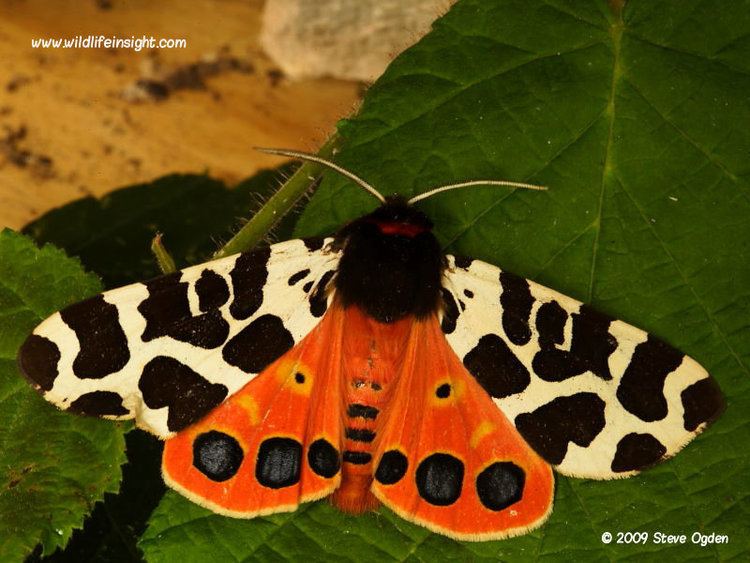 | ||
Similar Arctiinae, Arctia, Insect, Butterflies and moths, Lymantriinae | ||
Garden tiger moths arctia caja hd handling
The garden tiger moth or great tiger moth (Arctia caja) is a moth of the family Erebidae.
Contents
It has a wingspan of 45 to 65 millimetres (1.8 to 2.6 in). The design of the wings varies: the front wings are brown with a white pattern (which can however be missing), the back wings are orange with a pattern of black dots. The conspicuous patterns serve as a warning to predators, because the moth's body fluids are poisonous. Its effects are not yet fully known, but they contain quantities of neurotoxic choline esters which act by interfering with the acetylcholine receptor. The colours are also ideal for frightening predators such as small birds: the moth normally hides its hindwings under the cryptic forewings when resting. If a threat is perceived, the moth quickly shows its red colour and flies away. In this way, it successfully confuses and warns off the predator. There are many aberrations (pattern and colour variants), partly obtained artificially and partly by chance. Oberthür mentions about 500 different variants shown in 36 figures. Seitz gives an account of some named aberrations.
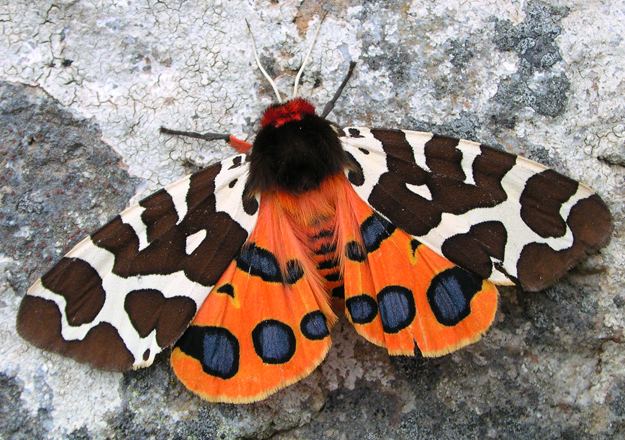
Distribution
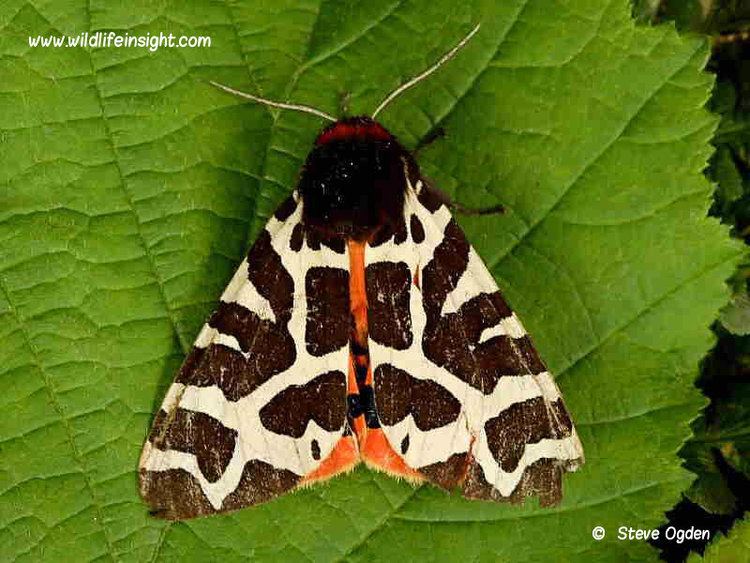
The garden tiger moth is found throughout much of the Palearctic, in Europe as far north as Lapland, in Northern Asia and Central Asia, and in North America. In the mountains (Tien Shan) this species is found up to an elevation of 3,000 metres (9,800 ft). The garden tiger moth loves damp places, which is why it is particularly common in river valleys as well as gardens and parks. The moth is nocturnal and can usually only be seen flying around a source of light. The distinctively coloured, long-haired caterpillar, on the other hand, is seen more frequently. It can grow up to 6 cm (2.4 in) long and plays dead when in danger. These moths are most common in June to August, in gardens, park, meadows, grasslands, and scrubby areas.
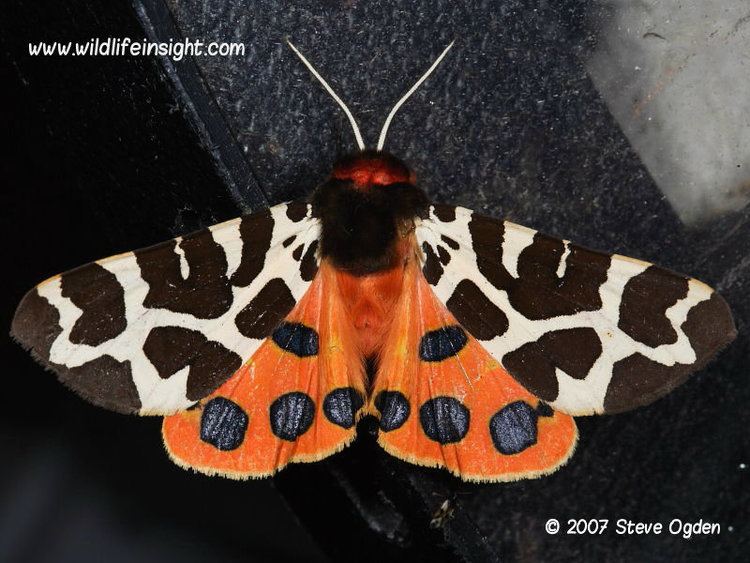
The garden tiger moth is protected in the UK under the Biodiversity Action Plan (BAP). Its numbers in the UK have declined by 89% over the past 30 years.
Development
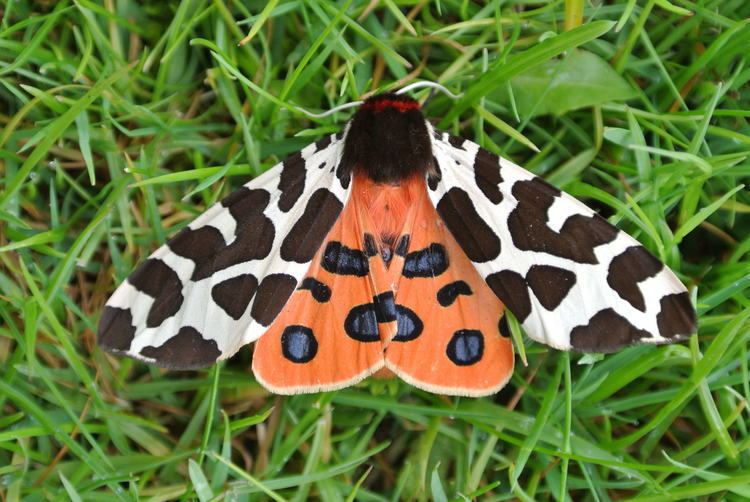
Eggs are laid starting in July. Large bluish-white clutches of eggs are laid on the lower surfaces of leaves. The caterpillars hatch in August. They spend the winter on the ground in protected places and pupate from June to July of the following year. The moths hatch from July to August.
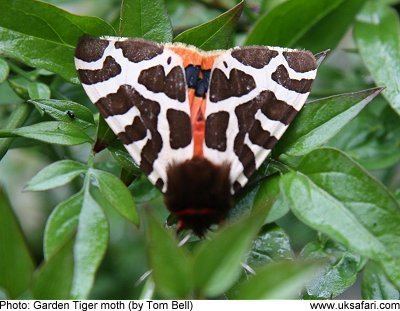
The caterpillar of the garden tiger moth feeds on various kinds of non-woody plants, as well as bushes and trees. It is especially fond of raspberry, blackberry, viburnum, honeysuckle, erica, and broom.
